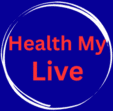
Heart disease stubbornly remains the leading cause of death for women globally, yet a dangerous misconception persists that it is primarily a “man’s disease.” This myth isn’t just misleading; it’s deadly. It leads to women dismissing their symptoms, and tragically, even healthcare providers sometimes misattribute the signs. The core of the issue lies in a critical fact that everyone needs to understand: a woman’s heart attack often presents differently than a man’s. While the classic, Hollywood-depicted heart attack—crushing chest pain, collapsing to the floor—does occur in women, it is far from the only, or even the most common, presentation. The female experience of a heart attack is frequently more subtle, a collection of vague complaints that are easy to explain away as stress, fatigue, or anxiety. Recognizing these silent signs is not just a matter of knowledge; it is a powerful tool for survival.
The male-centric model of heart attacks has been deeply ingrained in medical literature and public awareness for decades. This means the textbook symptoms we all know are largely based on the male presentation. For men, a heart attack is typically an obstructive event. A major coronary artery becomes completely blocked by a plaque rupture and blood clot, causing sudden, intense, and unmistakable pain in the center of the chest, often described as an elephant sitting on them. This pain may radiate down the left arm and be accompanied by profuse sweating. For women, the pathophysiology can be distinctly different. Rather than a single, severe blockage in a large artery, women often suffer from coronary microvascular disease, where the tiny microvasculature of the heart becomes damaged and dysfunctional. This doesn’t cause a sudden, dramatic blockage but rather a slow, suffocating reduction in blood flow to the heart muscle. The resulting symptoms are not a sledgehammer blow but a persistent, nagging whisper that is much easier to ignore.
So, what are these whispers? What are the subtle signs that women must learn to listen to? The most commonly reported symptoms in women experiencing a heart attack extend far beyond chest pain. Overwhelming and unusual fatigue is a hallmark. This isn’t just feeling tired after a long week; this is a profound, debilitating exhaustion that comes on suddenly and without explanation. Women describe it as a fatigue that makes it difficult to perform simple tasks, like walking to the bathroom or making a meal. This fatigue can hit weeks before the actual cardiac event. Another critical symptom is shortness of breath, or dyspnea. This occurs without any exertion whatsoever. You might be sitting in a chair watching television or lying in bed and suddenly find yourself struggling to catch your breath, as if you’ve just run a marathon. It’s a feeling of not being able to get enough air, which can understandably trigger panic, further complicating the picture.
Pain and discomfort in areas other than the chest are extremely common. Women frequently report pain in the back, specifically between the shoulder blades, a sensation of a tight band squeezing that area. Jaw pain, neck pain, and even a toothache that seems to have no dental cause can be referred pain from the heart. This pain may come and go, making it seem less urgent. Indigestion, nausea, and vomiting are also frequently reported. Because these are so commonly associated with gastrointestinal issues or a common stomach bug, they are dangerously easy to dismiss. A woman might take an antacid and try to sleep it off, unaware that her body is signaling a cardiac crisis. Other signs include a cold sweat, feeling lightheaded or dizzy, and a general sense of impending doom—a feeling that something is terribly wrong.
The challenge with these symptoms is their vagueness. Fatigue, nausea, back pain—each one, on its own, could be attributed to a hundred different minor ailments. This is why both women and their doctors must look at the context. Cardiologists emphasize the concept of “new or different.” Is this a new type of fatigue you’ve never experienced before? Is the shortness of breath happening without any trigger? Is the indigestion resistant to normal remedies? The combination of these symptoms is also a massive red flag. Unexplained fatigue coupled with nausea and jaw pain is a far more urgent picture than any one symptom alone. Dr. Janet Wei, a cardiologist at the Barbra Streisand Women’s Heart Center, often notes that women are masters of justification, talking themselves out of seeking help. She advises that if your body is doing something it has never done before, and especially if multiple strange symptoms appear together, it is time to get it checked out immediately.
The consequences of ignoring these signs are severe. Studies consistently show that women, particularly younger women, face delays in diagnosis and treatment when they present with heart attacks. This delay has a direct impact on outcomes. The longer the heart muscle is deprived of oxygen-rich blood, the more tissue dies, leading to greater long-term damage to the heart and a higher risk of complications or death. This diagnostic delay happens for several reasons. First, the woman herself may downplay her symptoms, not wanting to be a burden or appear dramatic. Second, when she does present to an emergency room, her symptoms may not trigger the same rapid “heart attack protocol” that classic chest pain would. She might be initially assessed for anxiety, acid reflux, or a pulled muscle, losing precious minutes or even hours. Raising awareness is therefore not just a public health initiative; it is a literal lifesaver.
Who is most at risk? While heart disease can affect any woman, certain factors significantly increase vulnerability. These include a family history of early heart disease, high blood pressure, high cholesterol, diabetes, smoking, and obesity. Furthermore, a woman’s reproductive history plays a unique role. Conditions like preeclampsia, gestational diabetes, and polycystic ovary syndrome (PCOS) are now recognized as major red flags for a woman’s future cardiovascular health. Experiencing any of these during pregnancy essentially serves as a stress test that reveals an underlying predisposition to heart disease. Going through premature menopause, whether natural or surgical, also increases risk, as estrogen has a protective effect on the cardiovascular system. Understanding these specific risk factors empowers women to have more informed conversations with their doctors long before a crisis occurs.
The most important takeaway is to be your own strongest advocate. In a medical setting, communication is key. Do not be afraid to be direct. If you feel something is wrong with your heart, say it clearly. Use phrases like, “I am concerned I am having a heart attack.” Detail your symptoms precisely, mentioning all of them, even those that seem unrelated. If you feel your concerns are being dismissed, politely but firmly ask for further testing, such as an electrocardiogram (EKG) or a blood test to measure troponin levels, which are proteins released when the heart muscle is damaged. It is far better to be told it was a false alarm than to suffer permanent damage because you stayed silent. Your life is worth the potential embarrassment of a false alarm.
Prevention, as always, is the ultimate goal. While you cannot change your genetics or family history, you have immense power over your lifestyle. A heart-healthy diet rich in fruits, vegetables, whole grains, and lean proteins is foundational. Regular physical activity, aiming for at least 150 minutes of moderate exercise per week, strengthens the heart and improves vascular health. Managing stress through techniques like meditation, yoga, or simply prioritizing sleep is not a luxury; it is a critical component of cardiovascular care. For women with risk factors like high blood pressure or cholesterol, working closely with a doctor to manage these conditions with medication is non-negotiable. It’s about building a partnership with your healthcare provider focused on long-term wellness rather than just treating problems as they arise.
The narrative around women and heart disease is changing, but it needs to change faster in both the exam room and the public consciousness. The image of a heart attack must expand to include the woman feeling nauseous and exhausted in her kitchen as surely as it includes the man clutching his chest on the golf course. This knowledge equips women to listen to their bodies with a more discerning ear and to demand the care they deserve without hesitation. The female heart is a complex and powerful organ, and its cries for help require a different language. Learning to understand that language is one of the most important steps we can take to protect the health and lives of the women we love. It is a conversation that needs to happen in homes, doctors’ offices, and communities everywhere.
